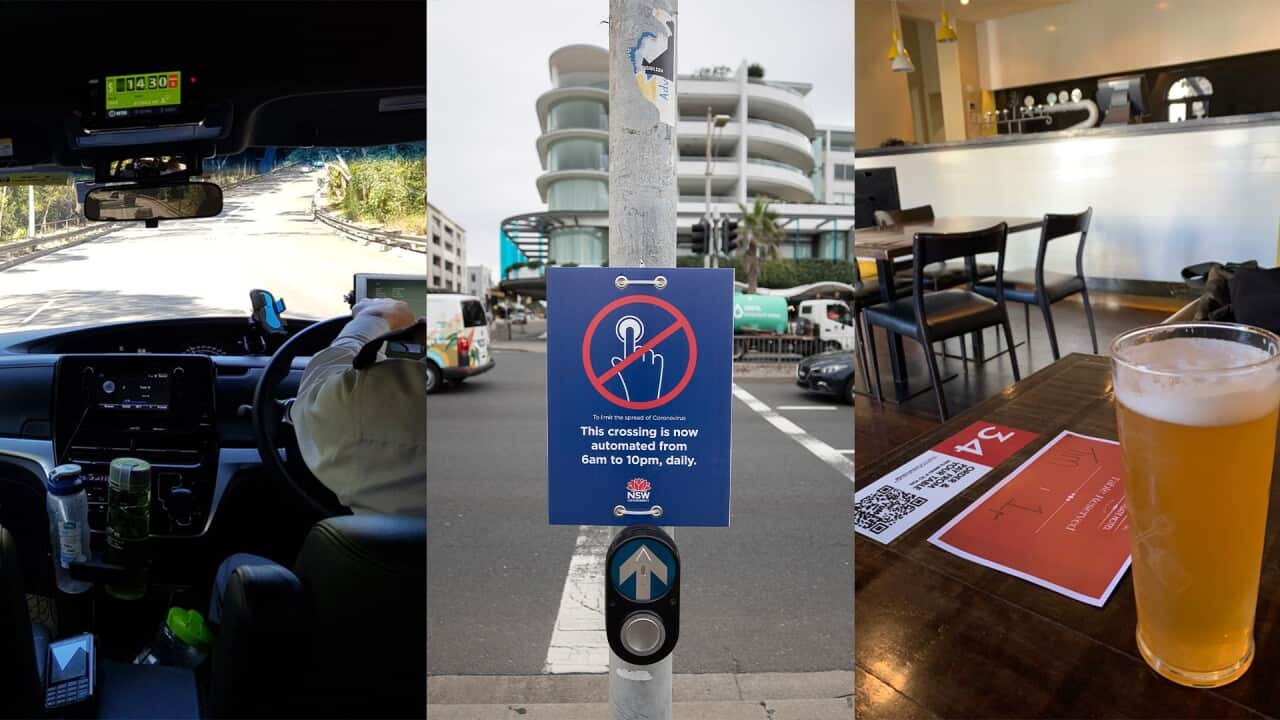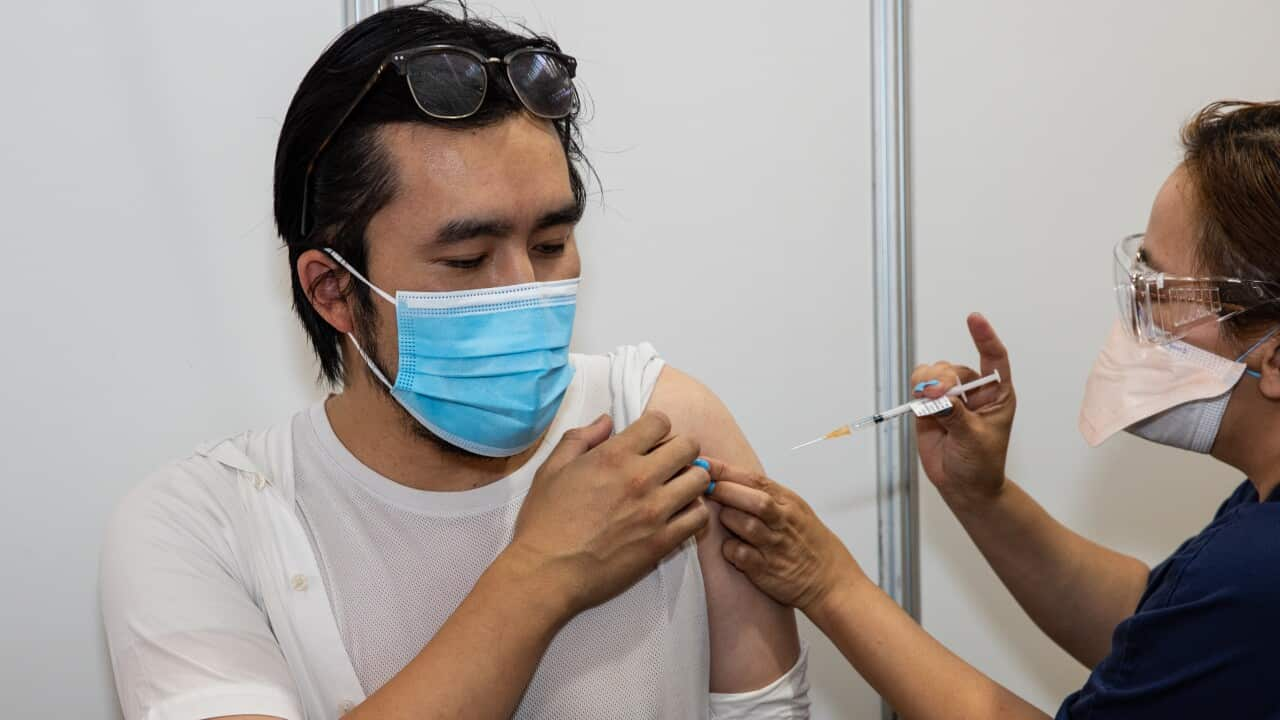1. We no longer sit in the front seat of taxis
Unlike places around the world such as London, which actively discourage people from sitting in the front seat of a taxi and often keep the passenger door locked, Australians travelling alone often rode 'shotgun' and enjoyed a chat with their cabbie.
But the COVID-19 pandemic has changed that, with recommendations for social distancing meaning many began heading straight for the back seat.
And they still do today.
2. We're still ordering our beers using QR codes
QR codes were already quite popular in many Asian countries prior to the pandemic, but in Australia businesses that used them could look like they were trying a little too hard to be hi-tech.
Now, they're everywhere.
While checking in to venues is no longer required, QR codes have remained in many restaurants to link to menus and for customers to place food and drink orders. It's now commonplace for people to order their beers from their table rather than at the bar.
While the pandemic made us think twice about pressing buttons on public transport and holding onto handrails if we didn't have any hand sanitiser with us, at some intersections the option has been completely removed.
While some temporary coverings at pedestrian crossings were removed after COVID-19 lockdowns were lifted, some have remained at certain intersections such as in Sydney's CBD.
Putting aside the general awkwardness that can arise when greeting people and navigating social and cultural norms, things got even more complicated during the pandemic due to social distancing recommendations.
Some have continued to be conscious of how they greet and interact with people this holiday season as COVID-19 cases continue in Australia.
It's become more common for people to ask first, 'can I give you a hug?', and instead of assuming a formal handshake, it's now more socially acceptable for people to just say hello and keep their hand by their side.
5. We've got used to quieter roads
Driving to work can be a daily nightmare for many living in Australia's capital cities but the rise of working from home has meant traffic levels have not completely returned to pre-pandemic numbers.
Figures from the Transport for NSW's Traffic Volume Viewer show traffic passing through the Cahill Expressway, which captures cars crossing the Sydney Harbour Bridge, hasn't completely returned to pre-pandemic levels.
In March 2019, there were around 7,000 cars travelling south during the morning peak each weekday, but this dropped to around 5,000 during most weeks of March 2022.
Nowadays, northbound traffic numbers during the afternoon peak are closer to normal especially on Mondays, Thursdays and Fridays, with volumes this year similar to 2019 numbers. But numbers appeared to be slightly lower on many Tuesdays and Wednesdays.

Traffic volumes crossing the Sydney Harbour Bridge have not completely returned to normal levels. Source: AAP
6. Cancelling plans last minute has become more acceptable
Another new feature of COVID-normal life is getting last-minute cancellations from friends and family who have developed any type of cold or flu symptom.
Even if they only have a runny nose or the start of a sore throat, people are choosing to stay home to avoid the risk of infecting others.
And as that's been the recommended health advice, it's also not a surprise any longer if the other person is totally fine with you cancelling.

Source: Twitter
7. We're still working from our kitchen tables
One of the most seismic shifts the pandemic has driven is the rise of working from home.
Employers who thought the end of the pandemic would see the return of workers to offices have been disappointed, with many employees unwilling to let go of the convenience of working at their kitchen tables.
Many people are still working from home several days a week, and some have even moved permanently to regional areas, making a wholesale return to the office very unlikely.
Living your life online - from Zooming our loved ones, to streaming a yoga class or ordering groceries from an app - has also continued.

People love being able to work from home. Source: AAP / Joe Giddens/PA/Alamy
8. We've finally embraced flu shots
Despite many Australian workplaces encouraging their employees to get a flu shot every year, lots of people didn't get a jab.
Messaging around the importance of vaccination during the COVID-19 pandemic may have shifted people's understanding and attitudes and encouraged them to get in the queue.
In 2019, at the start of the pandemic, around 7.5 million Australians got the influenza vaccination between 1 March to 7 December. This grew to 9 million by 2021, although the introduction of mandatory reporting of flu vaccines to the Australian Immunisation Register that year may also have had an impact.
In 2022, the number of flu vaccinations grew to 11 million, according to the Department of Health.

More Australians are now getting flu shots. Source: AAP












